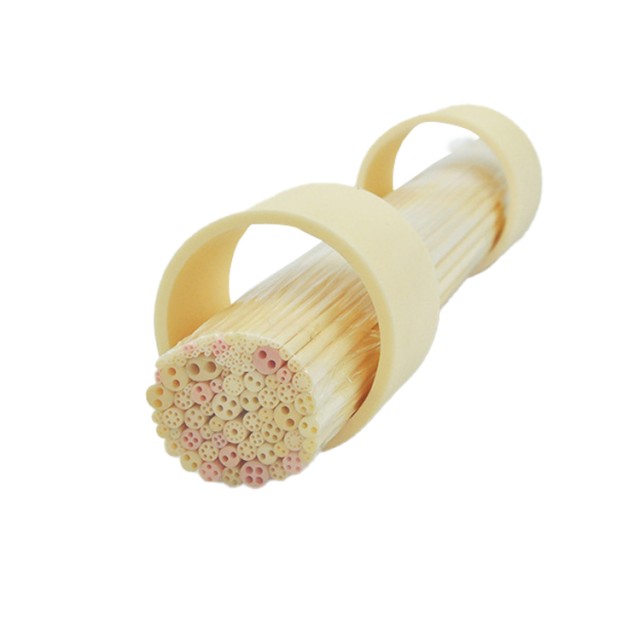
fine ceramics
High Temperature Aluminum Oxide (Al2O3) Protective Tube for Engineering Advanced Fine Ceramics
Item Number : KM-C07
Price varies based on specs and customizations
Shipping:
Contact us to get shipping details Enjoy On-time Dispatch Guarantee.
Why Choose Us
Reliable PartnerEasy ordering process, quality products, and dedicated support for your business success.
Application
Alumina oxide CeramicsTubes are often used as sheaths or housings for thermocouples (temperature sensing devices). Is a ceramic tube mainly made of aluminum oxide (aluminum oxide). Alumina ceramics have excellent high temperature resistance, mechanical strength and chemical inertness, making them suitable for a variety of industrial applications. Alumina ceramic tubes are used to protect thermocouples from harsh environments such as extreme temperatures, corrosive gases, or abrasive substances.They feature an open design and are available in single, dual, quadruple or multi-hole configurations to accommodate different thermocouple arrangements. They offer an enclosed, single-bore design that protects sensitive thermocouple wires from harsh environments while allowing accurate temperature measurements.
- Thermocouple protection: Alumina ceramic tubes are widely used as protective sleeves for thermocouples in various industries, including metal refining, glass manufacturing, chemical processing, power generation, etc.
- Furnace and Kiln Applications: These tubes are used as components in high temperature furnaces, kilns and heating systems where they provide insulation and protect sensitive components from harsh environments.
- Semiconductor industry: Alumina ceramic tubes are used in semiconductor manufacturing processes such as chemical vapor deposition (CVD) or physical vapor deposition (PVD), where accurate temperature measurement is critical.
- Laboratory equipment: Can be used in laboratory environments for high temperature experiments, sample preparation or as protection for sensitive measuring equipment.
Detail & Parts

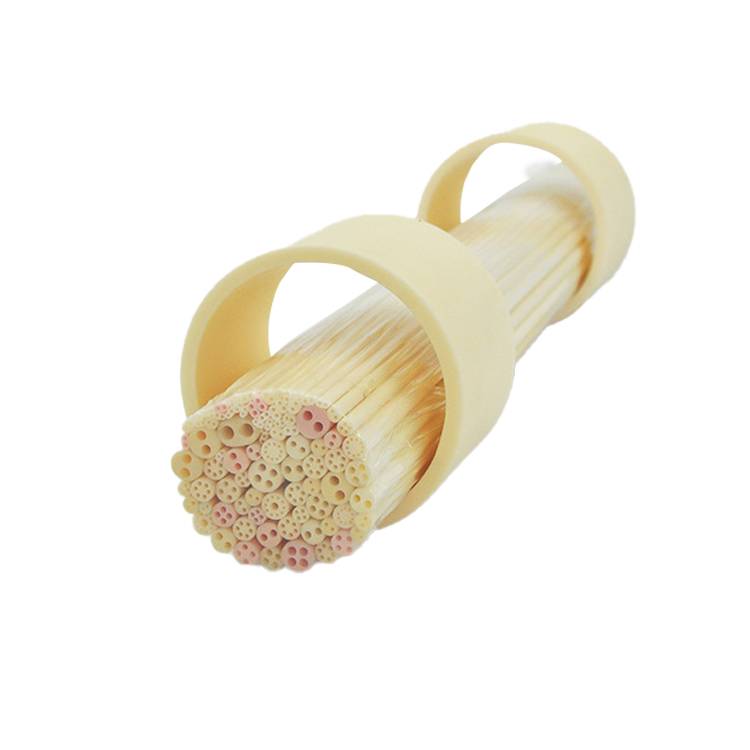
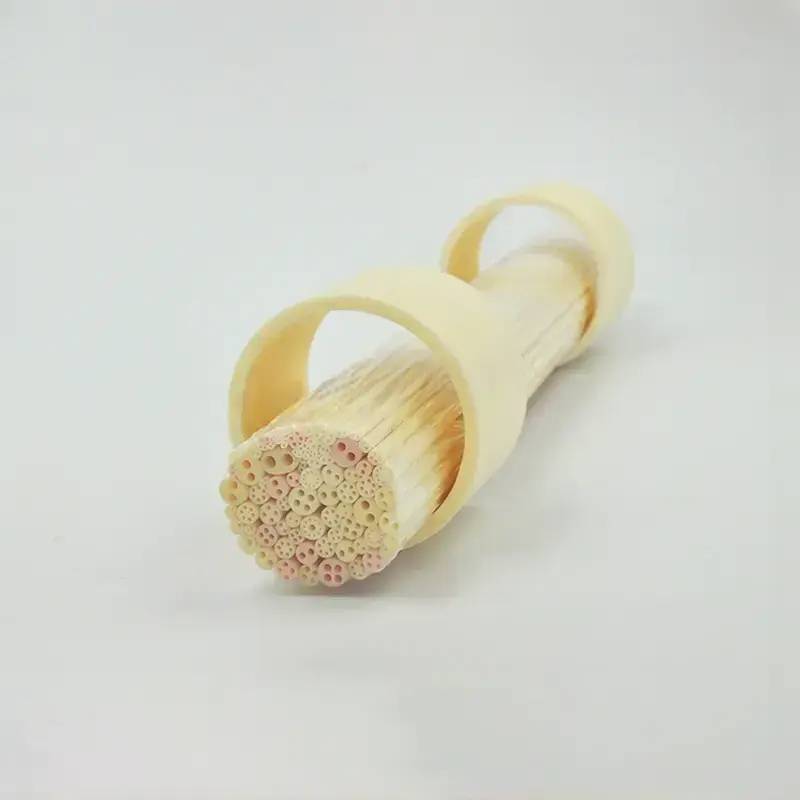
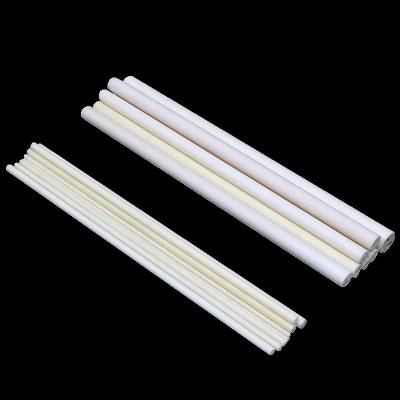
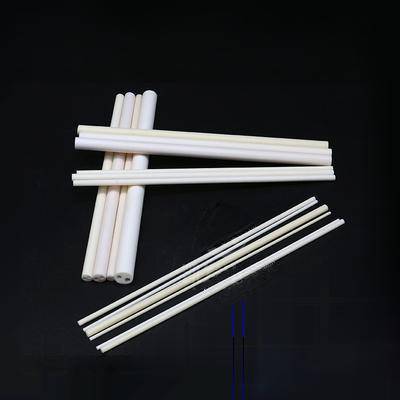
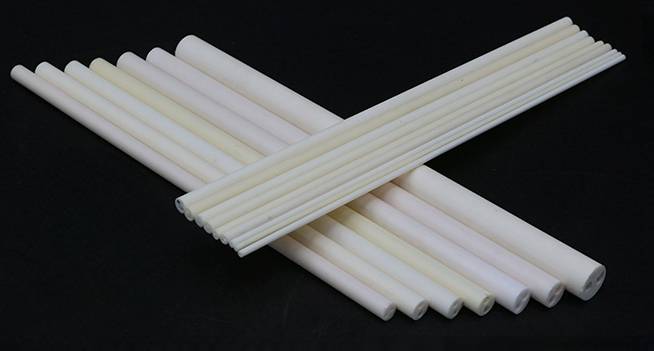

Technical specifications
High temperature alumina protection tube
| Ф1*Ф0.3mm (double holes) | Ф3*Ф0.7mm (double holes) | Ф2*0.4mm (four holes) |
| Ф1.5*Ф0.5mm (double hole) | Ф5*Ф1.5mm (double holes) | Ф4*Ф1mm (four holes) |
| Ф2*Ф0.5mm (double hole) | Ф5.5*Ф1.5mm (double holes) | Ф5*Ф1.2mm (four holes) |
| Ф2.5*Ф0.7mm (double holes) | Ф8*Ф2mm (double holes) | Ф8*Ф2mm (four holes) |
Alumina ceramic tube thermocouple protection tube double hole
| Ф1*0.3mm | Ф2*0.3mm | Ф3*0.7mm | Ф4*1.5mm | Ф5.5*1.5mm | Ф8*2mm |
| Ф1.2*0.3mm | Ф2*0.5mm | Ф3.5*0.8mm | Ф4.5*1.2mm | Ф6*1.8mm | Ф8*2.4mm |
| Ф1.4*0.4mm | Ф2*0.6mm | Ф3.5*1mm | Ф5*1.2mm | Ф6.5*1.8mm | Ф10*2.7mm |
| Ф1.5*0.4mm | Ф2.5*0.7mm | Ф4*1.2mm | Ф5*1.5mm | Ф6.5*2mm | Ф7*2mm |
The produce we show are available in different sizes and custom sizes are available on request.
Advantages
- High temperature resistance: Alumina ceramics can withstand extremely high temperatures, typically up to 1800°C (3272°F), which makes it suitable for applications involving high temperatures or rapid temperature changes.
- Mechanical Strength: Alumina ceramic tubes exhibit excellent mechanical properties, including high hardness, stiffness, wear resistance, and impact resistance. They can withstand thermal shock and mechanical stress commonly found in industrial environments.
- Chemical inertness: Alumina ceramics are chemically stable and resistant to most acids, alkalis and corrosive gases. This makes it ideal for protecting thermocouples in aggressive chemical environments or in processes involving strong acids or bases.
- Electrical Insulation: Alumina ceramic is an electrical insulator, which means it does not conduct electricity. This characteristic is very important when using thermocouples to measure temperature in live environments.
FAQ
What Are Advanced Ceramics?
What Are The Main Applications Of Fine Ceramics?
What Are Engineering Ceramics?
What Are The Main Types Of Advanced Ceramics?
What Are The Main Types Of Fine Ceramics?
What Are The Main Types Of Engineering Ceramics?
What Are The Applications Of Advanced Ceramics?
What Is The Principle Behind Fine Ceramics?
What Are The Applications Of Engineering Ceramics?
How Are Advanced Ceramics Manufactured?
What Are The Advantages Of Using Fine Ceramics?
How Do Engineering Ceramics Differ From Traditional Ceramics?
What Are The Advantages Of Using Advanced Ceramics?
What Are The Advantages Of Using Alumina Ceramics?
What Is The Difference Between Alumina And Zirconia Ceramics?
Why Are Zirconia Ceramics Preferred In Certain Applications?
Why Are Silicon Carbide Ceramics Used In High-temperature Applications?
What Makes Silicon Carbide Ceramics Suitable For High-temperature Applications?
What Makes Boron Nitride Ceramics Unique?
How Are Boron Nitride Ceramics Used In Electronics?
How Do Advanced Ceramics Contribute To Energy Efficiency?
What Is The Manufacturing Process Of Engineering Ceramics?
Can Engineering Ceramics Be Customized For Specific Applications?
4.8
out of
5
The quality of this alumina tube is top-notch. It's durable and can withstand high temperatures, making it perfect for my lab's needs.
4.9
out of
5
The alumina tube arrived quickly and in perfect condition. It's exactly what I needed for my research project.
4.7
out of
5
I'm impressed with the value for money of this alumina tube. It's affordable and works just as well as more expensive brands.
4.8
out of
5
The alumina tube is a great addition to my lab equipment. It's easy to use and clean, and it helps me get accurate results.
4.9
out of
5
The alumina tube is a must-have for any lab that works with high temperatures. It's durable and reliable, and it helps protect my equipment.
4.7
out of
5
I'm very satisfied with the alumina tube. It's well-made and has helped me improve the accuracy of my experiments.
4.8
out of
5
The alumina tube is a great value for money. It's affordable and works just as well as more expensive brands.
4.9
out of
5
The alumina tube is a great addition to my lab equipment. It's easy to use and clean, and it helps me get accurate results.
4.7
out of
5
The alumina tube is a must-have for any lab that works with high temperatures. It's durable and reliable, and it helps protect my equipment.
4.8
out of
5
I'm very satisfied with the alumina tube. It's well-made and has helped me improve the accuracy of my experiments.
4.9
out of
5
The alumina tube is a great value for money. It's affordable and works just as well as more expensive brands.
4.7
out of
5
The alumina tube is a great addition to my lab equipment. It's easy to use and clean, and it helps me get accurate results.
4.8
out of
5
The alumina tube is a must-have for any lab that works with high temperatures. It's durable and reliable, and it helps protect my equipment.
4.9
out of
5
I'm very satisfied with the alumina tube. It's well-made and has helped me improve the accuracy of my experiments.
4.7
out of
5
The alumina tube is a great value for money. It's affordable and works just as well as more expensive brands.
4.8
out of
5
The alumina tube is a great addition to my lab equipment. It's easy to use and clean, and it helps me get accurate results.
4.9
out of
5
The alumina tube is a must-have for any lab that works with high temperatures. It's durable and reliable, and it helps protect my equipment.
4.7
out of
5
I'm very satisfied with the alumina tube. It's well-made and has helped me improve the accuracy of my experiments.
4.8
out of
5
The alumina tube is a great value for money. It's affordable and works just as well as more expensive brands.
REQUEST A QUOTE
Our professional team will reply to you within one business day. Please feel free to contact us!
Related Products

High Temperature Wear-Resistant Alumina Al2O3 Plate for Engineering Advanced Fine Ceramics
High temperature wear-resistant insulating alumina plate has excellent insulation performance and high temperature resistance.

High Temperature Alumina (Al2O3) Furnace Tube for Engineering Advanced Fine Ceramics
High temperature alumina furnace tube combines the advantages of high hardness of alumina, good chemical inertness and steel, and has excellent wear resistance, thermal shock resistance and mechanical shock resistance.
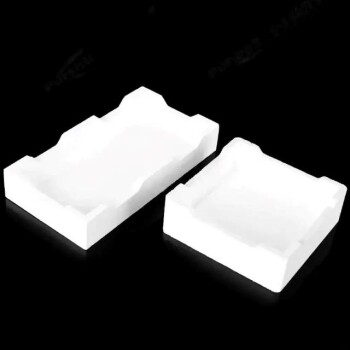
Advanced Engineering Fine Ceramics Alumina Ceramic Saggar for Fine Corundum
Alumina sagger products have the characteristics of high temperature resistance, good thermal shock stability, small expansion coefficient, anti-stripping, and good anti-powdering performance.

In the journey of scientific exploration and industrial production, every detail is crucial. Our arc-shaped alumina ceramic crucibles, with their excellent high temperature resistance and stable chemical properties, have become a powerful assistant in laboratories and industrial fields. They are made of high-purity alumina materials and manufactured through precision processes to ensure excellent performance in extreme environments.

Alumina wear-resistant ceramic washer are used for heat dissipation, which can replace aluminum heat sinks, with high temperature resistance and high thermal conductivity.

Alumina ceramic screws are fastening components made of 99.5% alumina, ideal for extreme applications requiring excellent thermal resistance, electrical insulation and chemical resistance.

Zirconia Ceramic Gasket Insulating Engineering Advanced Fine Ceramics
Zirconia insulating ceramic gasket has high melting point, high resistivity, low thermal expansion coefficient and other properties, making it an important high temperature resistant material, ceramic insulating material and ceramic sunscreen material.

Engineering Advanced Fine Ceramics Alumina Al2O3 Crucible With Lid Cylindrical Laboratory Crucible
Cylindrical Crucibles Cylindrical crucibles are one of the most common crucible shapes, suitable for melting and processing a wide variety of materials, and are easy to handle and clean.

Advanced Engineering Fine Ceramics Boron Nitride (BN) Ceramic Parts
Boron nitride ((BN) is a compound with high melting point, high hardness, high thermal conductivity and high electrical resistivity. Its crystal structure is similar to graphene and harder than diamond.

High Purity Alumina Granulated Powder for Engineering Advanced Fine Ceramics
Ordinary alumina granulated powder is alumina particles prepared by traditional processes, with a wide range of applications and good market adaptability. This material is known for its high purity, excellent thermal stability and chemical stability, and is suitable for a variety of high-temperature and conventional applications.

1700℃ Laboratory Quartz Tube Furnace with Alumina Tube Tubular Furnace
Looking for a high-temperature tube furnace? Check out our 1700℃ Tube Furnace with Alumina Tube. Perfect for research and industrial applications up to 1700C.

1400℃ Laboratory Quartz Tube Furnace with Alumina Tube Tubular Furnace
Looking for a tube furnace for high-temperature applications? Our 1400℃ Tube Furnace with Alumina Tube is perfect for research and industrial use.

Alumina ceramics have good electrical conductivity, mechanical strength and high temperature resistance, while zirconia ceramics are known for their high strength and high toughness and are widely used.

Hexagonal Boron Nitride HBN Ceramic Ring
Boron nitride ceramic (BN) rings are commonly used in high temperature applications such as furnace fixtures, heat exchangers and semiconductor processing.

Advanced Engineering Fine Ceramics Aluminum Nitride (AlN) Ceramic Sheet
Aluminum nitride (AlN) has the characteristics of good compatibility with silicon. It is not only used as a sintering aid or reinforcing phase for structural ceramics, but its performance far exceeds that of alumina.
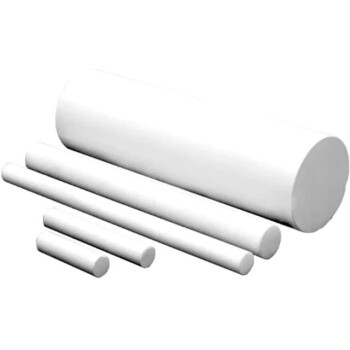
Boron Nitride (BN) Ceramic Rod for High Temperature Applications
Boron nitride (BN) rod is the strongest boron nitride crystal form like graphite, which has excellent electrical insulation, chemical stability and dielectric properties.

High Temperature Muffle Oven Furnace for Laboratory Debinding and Pre Sintering
KT-MD High temperature debinding and pre-sintering furnace for ceramic materials with various molding processes. Ideal for electronic components such as MLCC and NFC.

Engineering Advanced Fine Ceramics Head Tweezers with Pointed Elbow Zirconia Ceramic Tip
Zirconia ceramic tweezers are a high-precision tool made of advanced ceramic materials, especially suitable for operating environments that require high precision and corrosion resistance. This type of tweezers not only has excellent physical properties, but is also popular in the medical and laboratory fields because of its biocompatibility.

Precision Machined Yttrium Stabilized Zirconia Ceramic Rod for Engineering Advanced Fine Ceramics
Zirconia ceramic rods are prepared by isostatic pressing, and a uniform, dense and smooth ceramic layer and transition layer are formed at high temperature and high speed.
Related Articles

Entropy and the Alumina Tube: The Art of Precision Maintenance
Discover the disciplined approach to cleaning alumina furnace tubes. Learn how to prevent thermal shock, remove residue with acid, and extend equipment life.

Dos and don'ts during the installation of molybdenum disilicide (MoSi2) heating element
Precautions when installing MoSi2 heating elements

The Ceramic Paradox: Why the Best Way to Clean an Alumina Tube is Not to Clean It
Deep cleaning is often a symptom of process failure. Discover the engineering protocols to maintain alumina tubes, prevent thermal shock, and ensure longevity.

The Crucible's Choice: Why Your Furnace Tube Material Defines Experimental Success
Selecting a furnace tube is a critical trade-off between thermal resilience, chemical purity, and operational integrity. Make the right choice.

Why Your Ceramic Furnace Tubes Keep Cracking—And How to Choose the Right One
Tired of failed experiments from cracked ceramic tubes? Learn the real reason it happens and how to select the correct material (Alumina, Quartz) for your lab.

Cracked Tubes, Contaminated Samples? Your Furnace Tube Is The Hidden Culprit
Frustrated by failed experiments? Learn why your furnace tube material—not your process settings—is the critical variable causing inconsistent results.

Advanced Alumina Ceramics: Applications and Manufacturing Techniques
Overview of alumina ceramics' applications and manufacturing methods, including molds, isostatic pressing, and green body formation.

Advanced Alumina Ceramics: Applications and Manufacturing Techniques
This article discusses the applications and manufacturing techniques of advanced alumina ceramics, including molds, isostatic pressing, and green bodies.

Advantages of Mullite Fiber Lining for High-Temperature Furnaces
Explores the benefits of mullite fiber linings in high-temperature industrial furnaces, focusing on thermal stability, energy efficiency, and long-term cost savings.

Understanding Oxide Ceramics: Concepts, Classification, and Applications
This article delves into the concept, classification, and diverse applications of oxide ceramics, highlighting their significance in various high-tech fields.

Precision Ceramic Materials for Energy Conversion Applications
Overview of various ceramic materials used in energy conversion technologies, including heaters, piezoelectric ceramics, and solid oxide fuel cells.

Ceramic Alumina Crucible for Thermal Analysis Test Containers
An in-depth guide on selecting and using ceramic alumina crucibles for thermal analysis tests, focusing on factors affecting test results.